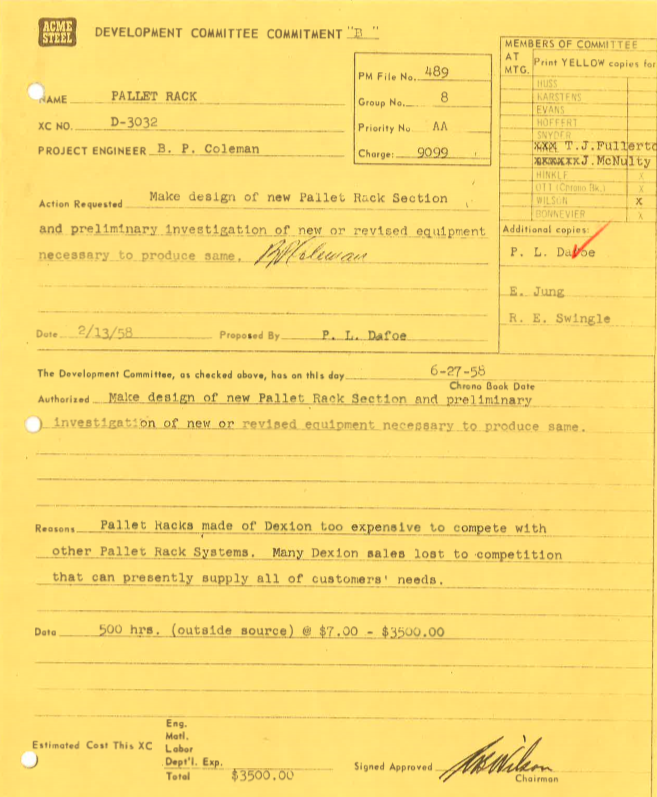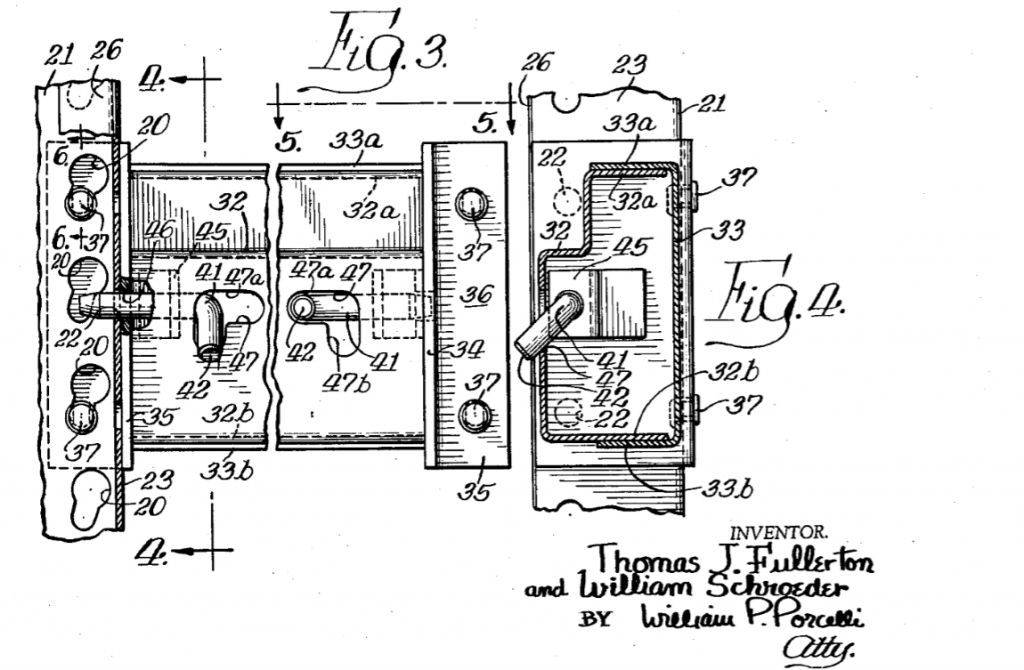Once upon a time there was a Chicago-based company named Acme Steel. They’d been in business in one iteration or another since 1887… and carried-on through two world wars, the Great Depression, and a number of other serious challenges. Then in the 1950’s they were once again confronted with a challenge, in the form of robust competition and excess capacity. In response, they began a quest for new markets and opportunities for their steel. What resulted was the key that unlocked a whole new world for the pallet rack and materials handling industries.
The Good News

Original Appropriation
The good news was that Acme produced steel that was up to 14” wide, and the bad news was that Acme only produced steel that was up to 14” wide. Competition had heated up in the steel industry following World War II and Acme wasn’t alone looking for ways to expand its customer base and product offerings.
Competitors were able to produce wider steel, up to 60” wide, which gave them availability to broader market opportunities. Determined to find a way to compete and to use the capacity of the mill, they brought together a team of engineers to come up with new uses for steel that was no wider than 14”.
In 1957 Bill Lorden was an engineer working for Acme. It was his recommendation that pallet rack was a good potential product for Acme that set the wheels of a history-making design in motion.
He requested money to engineer and design a pallet rack product. Nick Zagotta, a member of the search team remembers the process, “We talked to people in the rack business and examined sample pieces. We did not want to make it like anyone else’s,” he explains.
So, in 1958 an official appropriation was created and signed by ACME management to allow Bill and his team to use to up $3500 or 500 engineering hours to develop a new pallet rack design using, of course, 14” steel.

Original Patent Drawings – Keyhole Punch
The Key
What these engineers ultimately settled on was the keyhole design which is still foundational today in roll-formed pallet racking, though it is most often referred to as the “teardrop” punch. Lorden’s team also designed the connections to allow uprights and beams to be secured without nuts and bolts making the rack easier to assemble than current offerings.
The team applied for a patent and by March of 1960 they shipped their first order! Within 6-7 years Acme’s competitors were redesigning their pallet rack to ensure that it was interchangeable with the Acme key-hole design… you could say Lorden’s design had become the “key” to even getting their products sold.

Over the years variations and modifications have been developed for roll-formed pallet rack hole punching… we’ve even blogged about it in the past, Roll-Formed Pallet Racking… What’s with All Those Holes? But we simply wouldn’t be where we are today without the work and creative thinking of Bill Lorden and the Acme Steel Company team.
It probably comes as no surprise that in 1964, Acme merged with the Interlake Iron Corp., a Cleveland-based company that owned plants in Chicago, to form the Interlake Steel Corp.
Sadly, Bill passed on in 2019, but we are honored to be able to remember him and his colleagues and their significant contribution to the industry that serves so many.

